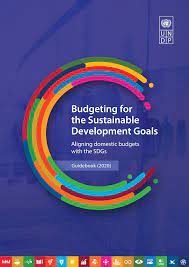The government unveiled the budget for the fiscal year 2021-2022, with the outlay kept at Rs8,478 billion and the tax target set at an ambitious Rs5,829 billion. With certain limitations imposed by the ongoing covid-19 pandemic and the IMF programme, the budget is with an expansionary and feel-good approach, significantly increasing subsidies and incentives for big business, manufacturing, corporate market and agriculture sectors and proposing about 24 percent hike in revenues, including Rs 506 billion worth of additional measures.
The government has set the target of tax revenue at Rs 5,829 billion, non-tax revenue at Rs2,080 billion. Other than that, non-revenue receipts are expected to be Rs 4,497 billion, non-bank borrowing to touch Rs 1,241 billion, net external receipts to come in at Rs1,246 billion, bank borrowing to be Rs 681 billion and privatization proceeds to fetch Rs 252 billion. Current expenditures will include interest payments of Rs 3,060 billion, pensions of Rs 480 billion, defence services spending of Rs 1,370 billion and grants and transfers to provinces and other subsidies of Rs 1,168 billion. Apart from this, development expenditures under the federal Public Sector Development Programme have been allocated Rs 900 billion, and Rs 64 billion for development purposes.
In a year when, according to government data, 20.7 million people were rendered unemployed between March and October 2020, that the economy’s productive power kept going is more than a miracle for a government that won the 2018 election on the promise of creating 10 million jobs. The data also shows that the government’s decision to steer clear of a complete lockdown resulted in employment rising again after September 2020, and by the end of the year, Pakistan’s workforce was once again at about 55 million. Official estimates show that Pakistan’s economy has grown by almost 4 percent in the current fiscal year. Not only is this double what the government projected in July 2020, but it far outstrips the predictions of multilateral financial institutions, mainly the International Monetary Fund and the World Bank, whose growth projections for Pakistan were 1.3 and 1.5 percent, respectively.
The Economic Survey 2020-2021 indicates that much of the credit for the recovery goes to large scale manufacturing, which grew by about 9 percent overall. The government is targeting a GDP growth of 4.8 percent for FY22, compared to the 3.9 percent achieved in FY21; and if achieved, this will be the highest GDP growth since FY18. The government’s stimulus packages in the shape of tax refunds for exporters, deferment of loans for small enterprises, and of course the Ehsaas programme payouts to the poorest sections of society, seem to have played a role in keeping production and demand going.
Pakistan has a complex tax system of over 70 unique taxes and at least 37 government agencies administering these taxes, yet not collecting enough and pushing the country into a deeper debt trap. The balancing of books through more loans— going to the IMF for 22 times and 13 bail-outs in 60 years— to bridge the fiscal deficit has been the favourite mantra of all governments. Maintaining fiscal stability and improving fiscal health while adopting a pro-growth and expansionary fiscal policy will be a real challenge for the government.
In terms of key features, tax collection has been targeted at a record Rs 5829 billion, but the emphasis is on reducing rates and extending the tax net. Even the tax collection target is almost 18% higher than this year’s collection, once again ambitious and stringent, possibly leading to an increased debt burden. Moreover, work towards automation of the tax system and implementation of the track-and-trace system is likely to be a key focus in achieving higher tax revenue. How this revenue will be collected is somewhat vague, when the government is reducing sales tax in some areas.
There are also some business-friendly measures for small businesses, like raising the turnover tax ceiling quite drastically, from a turnover of Rs3 billion to Rs10 billion. The withholding tax on bank transactions has been removed, but whether all this happens depends entirely on how tax evasion is curtailed and the tax net widened. The strings attached to borrowing from the IMF are always directly linked to such budgetary indicators as tax collection, inflation, primary deficit, interest rate and currency value. The government also made some bold-steps by refusing the IMF demand to increase the tax burden on existing taxpayers and resisting the demand for electricity tariff increase, and eyeing on expanding the tax net through use of data and technology. The government has also resisted the IMF’s demand to increase the component of petroleum levy in the budget. However, the government is expected to keep total subsidies at around Rs530 billion compared to last year’s budget of Rs209 billion.
Reduction of duties and taxes on small vehicles will also help the middle class. It will also increase the production of small cars, creating some jobs as well as additional revenue for the FBR. The capital gains tax on securities has been reduced from 15 percent to 12.5 percent. Likewise, record allocations for different initiatives of the Ehsaas Programme, for afforestation, water security, the covid-19 vaccine, power infrastructure, reducing regional disparities and climate change are all steps in the right direction.
To improve the purchasing power of the people, the minimum wage has been increased to Rs 20,000 per month. Likewise, a 10 percent increase has been made in government pays and pensions. Admittedly, these increases are not sufficient to cope with inflation. The government is expecting some proceeds from privatization and some provincial surplus but would have to borrow at least Rs3200-3500 billion if it gets some additional revenue from the above-mentioned heads.
Unfortunately, the PTI Government has made no effort to reform the fragmented and highly complex tax system, remove policy distortions and reduce the fiscal deficit. Unfair taxation is the root cause of our multiple socio-economic ills, resulting in inequitable distribution of resources. Earlier, section 64C of Income Tax Ordinance 2001 was withdrawn on the dictates of the IMF before the release of a tranche of $500 million, to make amendments in the Income Tax Ordinance 2001 immediately, which is a blatant violation of the Constitution.
Pakistan has a complex tax system of over 70 unique taxes and at least 37 government agencies administering these taxes, yet not collecting enough and pushing the country into a deeper debt trap. The balancing of books through more loans— going to the IMF for 22 times and 13 bail-outs in 60 years— to bridge the fiscal deficit has been the favourite mantra of all governments. Maintaining fiscal stability and improving fiscal health while adopting a pro-growth and expansionary fiscal policy will be a real challenge for the government.
Ensuring and implementing sustainable growth will require relaxation in taxes and duties, economic growth, improved employment, pandemic support measures and managing fiscal imbalances. Moreover, Infrastructure, agriculture, manufacturing sector, as well as incentives to stimulate education, construction and housing are expected to be on the priority. The budget 2021-22 will require focus on inclusive and sustainable growth fostering with investment.





















